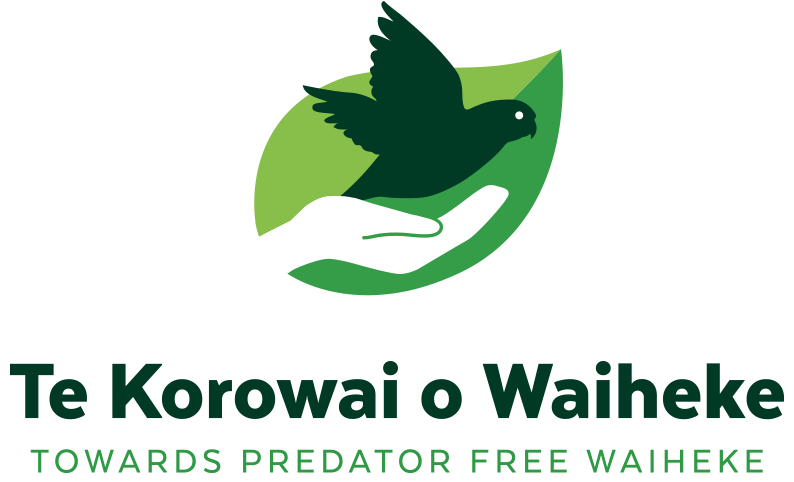How will stoats be removed?
The stoat eradication programme on Waiheke Island predominantly uses traps based on a network of one trap per six hectares across the entire island.
Traps
Tried and proven DOC series best practice traps;
- DOC 200’s for stoats and weaselsTraps are deployed along linear features (e.g. roads, tracks, forest, pasture, wetland edges) in the landscape, which stoats like to follow.
Traps have been serviced since February 2020.
In March 2022 the Technical Advisory Group conducted a review of the trap catch and trail camera data since February 2020 and confirmed that the eradication programme was progressing well.
Traps were pre-baited for a six-week period before they were opened in February 2020 to encourage stoats to interact with the traps.
The frequency of trap checks is based on the stoat breeding cycle, from a minimum of once a month to a maximum of once a week.
Volunteers, contractors, farm staff, community groups, park rangers and Te Korowai o Waiheke field team check and maintain the traps.
Traps are baited with a visual lure e.g. an egg and a strong-smelling lure e.g. fresh rabbit.
Every trap is enclosed in a custom-designed box that makes it hard for non-target animals to get into the trap area.
A small number of “live” traps may be deployed around den sites identified during the breeding season to attempt to catch stoats that are avoiding DOC 200 traps. These traps are checked daily. If you see an animal in a “live” trap call 0800 BIRDSONG.
Other tools used in the stoat eradication programme include:
Detection cameras
Trail cameras are set up across the island to determine the relative abundance and location of stoats. Data from these trail cameras is extremely important as we get down to low numbers of mustelids and will also help us work out which habitats these animals use the most on Waiheke Island.
Stoat Detection Dogs
Predator dogs are used to detect stoat scent or scat, especially around areas where there has been a stoat sighting. They will also be used periodically to check whether any mustelids are living in between where our traps are laid out on the network.
Vertebrate Pesticides
Vertebrate pesticides will only be used if other techniques are not successful and in limited areas to catch stoats that are avoiding traps or potentially female stoats in dens. Landowners will be informed should they need to be used on their property.
Keeping Waiheke stoat-free (biosecurity)
Te Korowai o Waiheke is working in partnership with Pest Free Hauraki Gulf (a joint initiative between Auckland Council and DOC to help protect conservation islands in the Hauraki Gulf - (https://www.doc.govt.nz/pestfreehaurakigulf) to establish a biosecurity programme to prevent stoat reinvasion to Waiheke.
Outcome monitoring
Te Korowai o Waiheke has monitored native species with five-minute birdcounts since 2020. This will give an indication of the impacts of the stoat eradication programme. This includes forest, wetland and coastal bird surveys.
Waiheke Islanders are being encouraged to use the eBird app to record sightings of ten key indicator species that are predated on by rats and stoats; tūī, pīwakawaka, kererū, ōi, kākā, kororā, spotless crake, dotterel, ruru, and kākāriki.
Kauri Dieback prevention
Waiheke Island is currently kauri dieback free. Te Korowai o Waiheke staff and contractors will be following kauri dieback hygiene procedures. Please let us know if you have kauri on your property in areas where we may want to place traps.
DOC 200 Trap
Kererū. Photo Peter Rees
Jonathan Miles and one of the predator control dogs
Pīwakawaka. Photo Peter Rees




